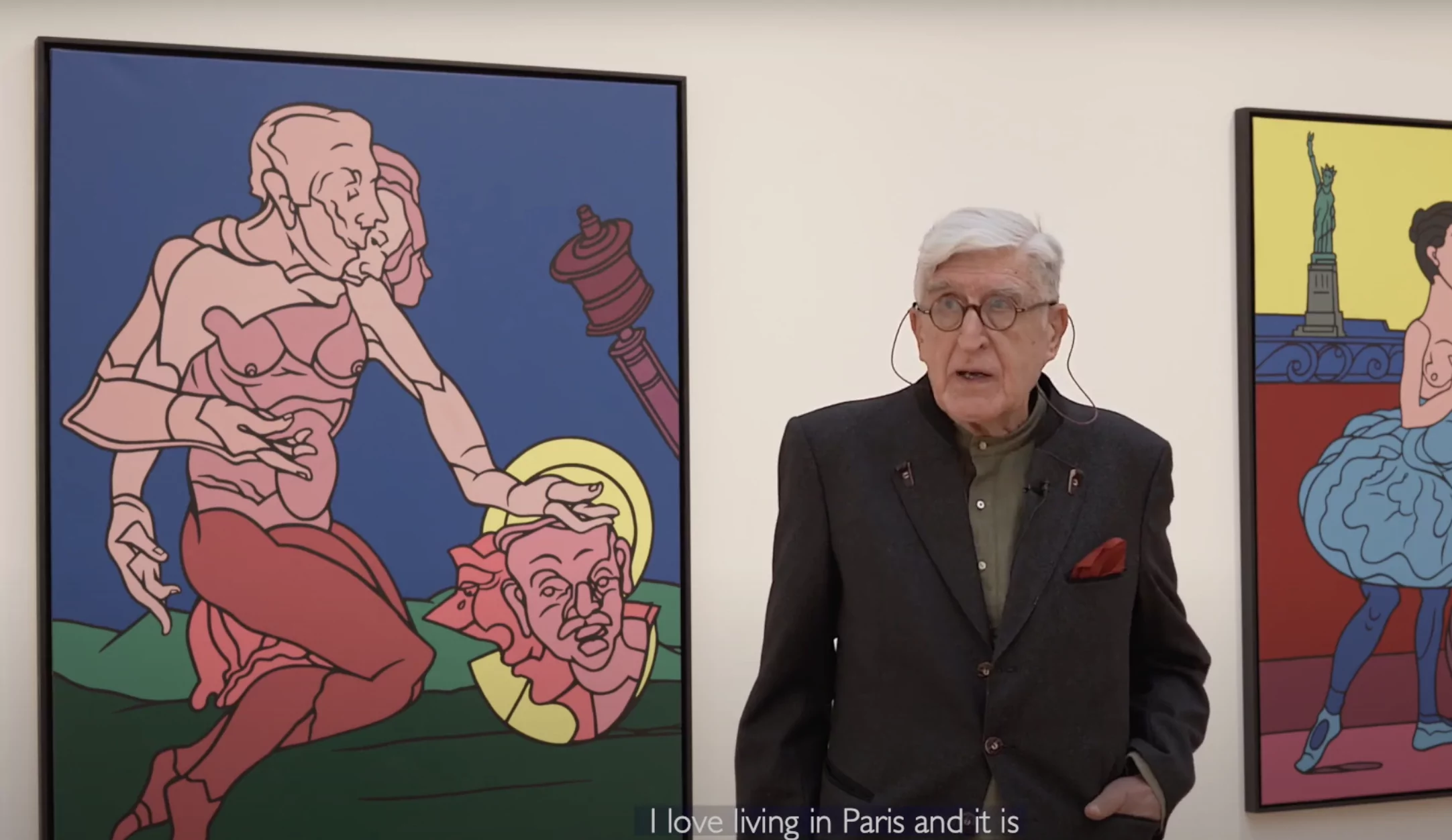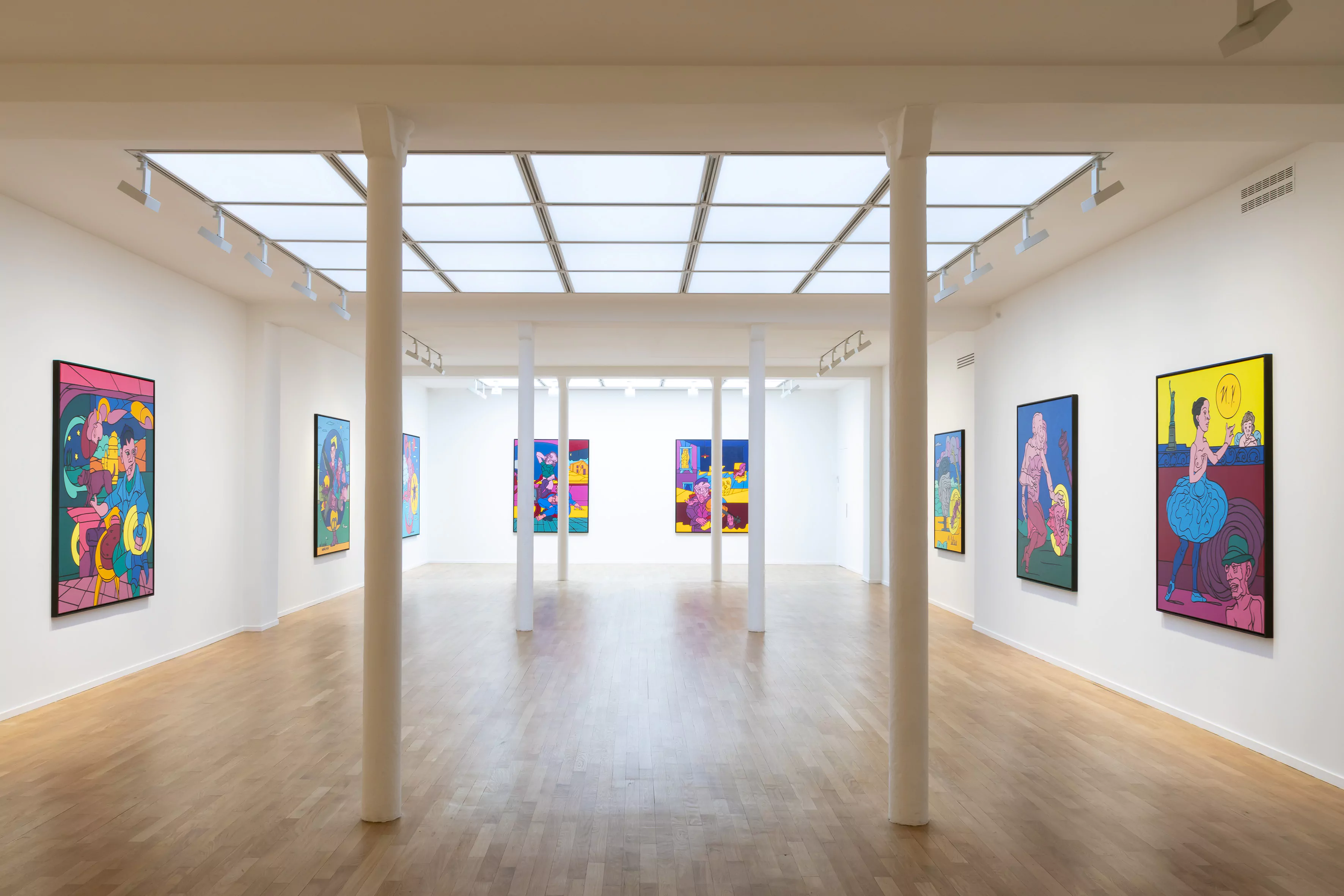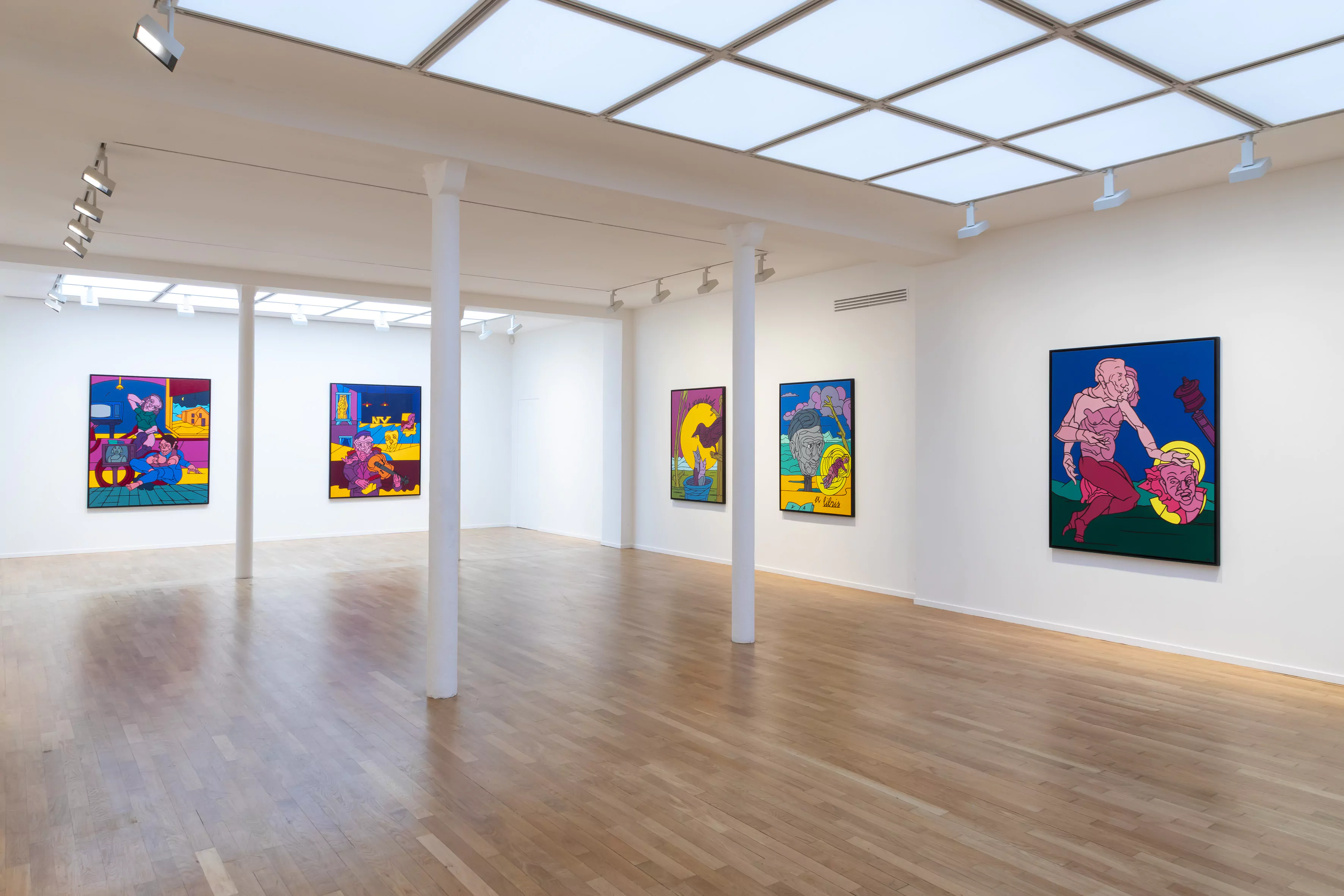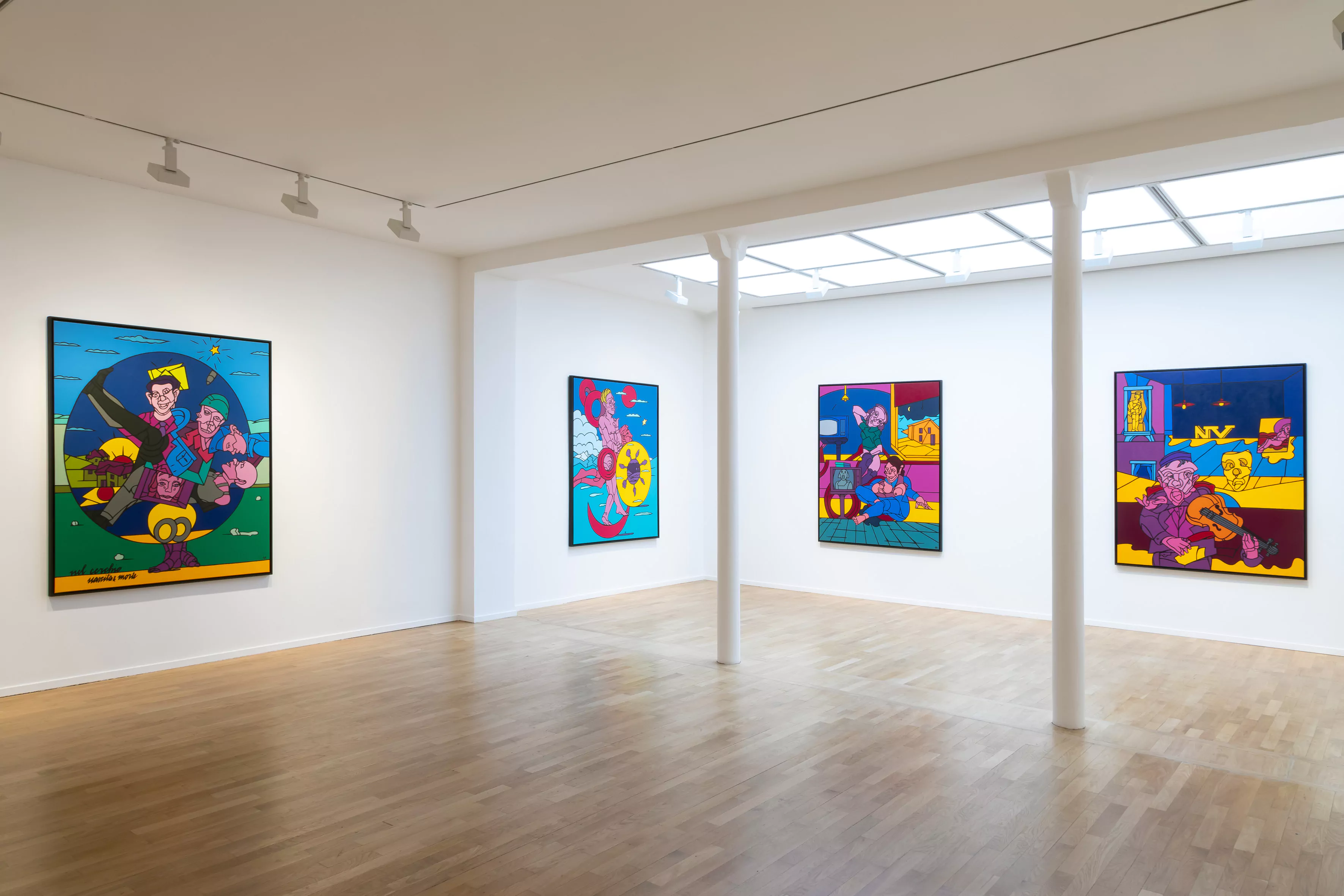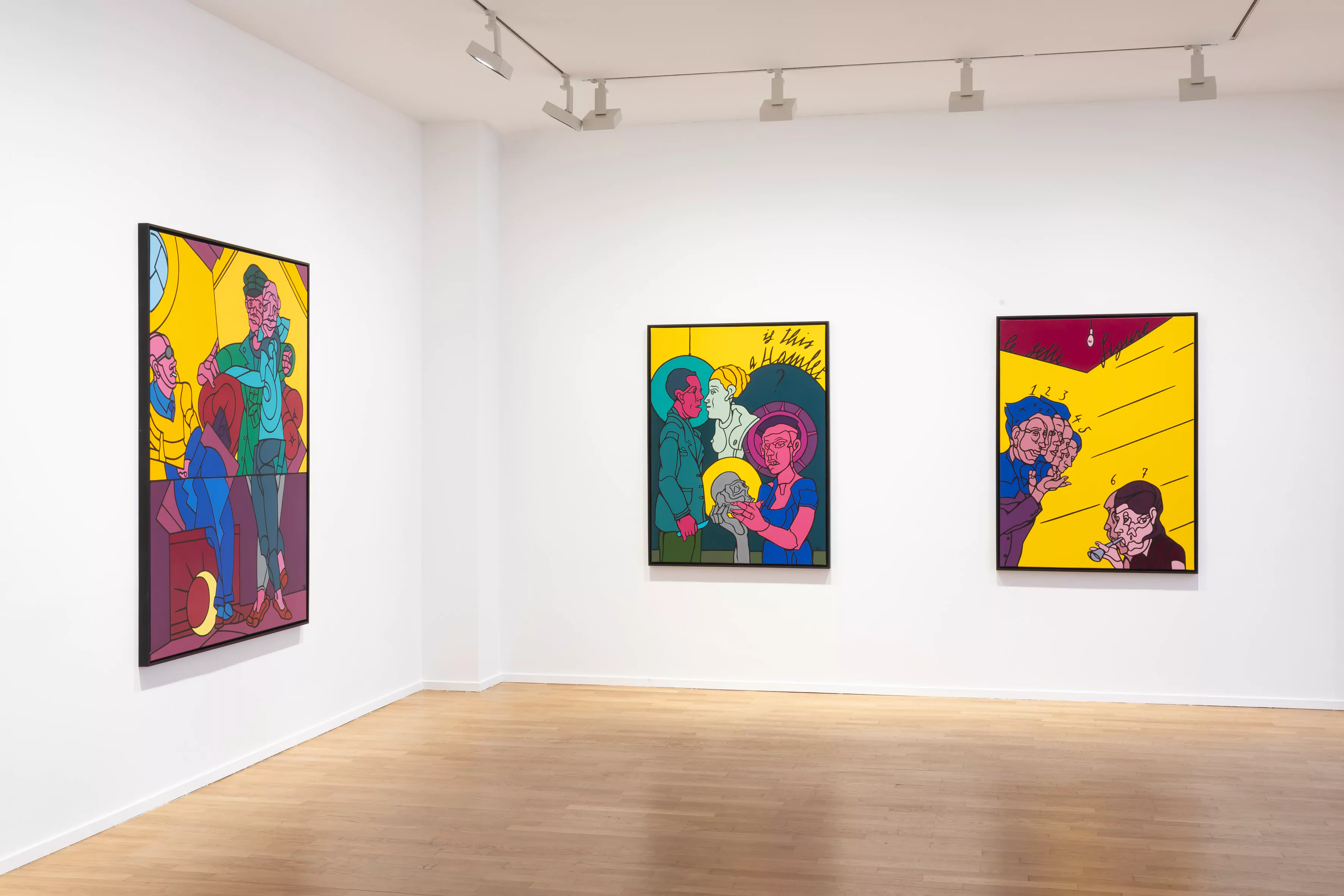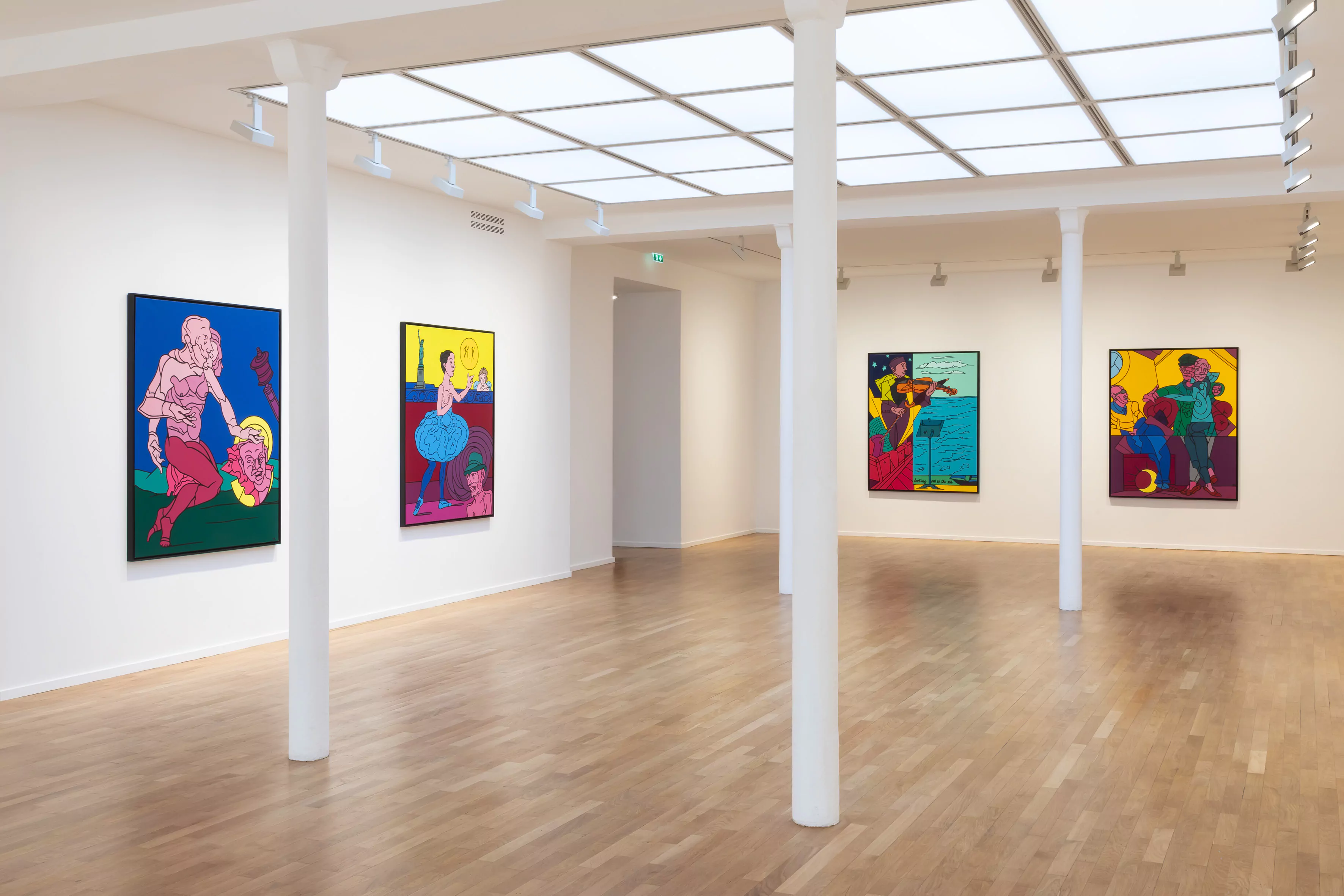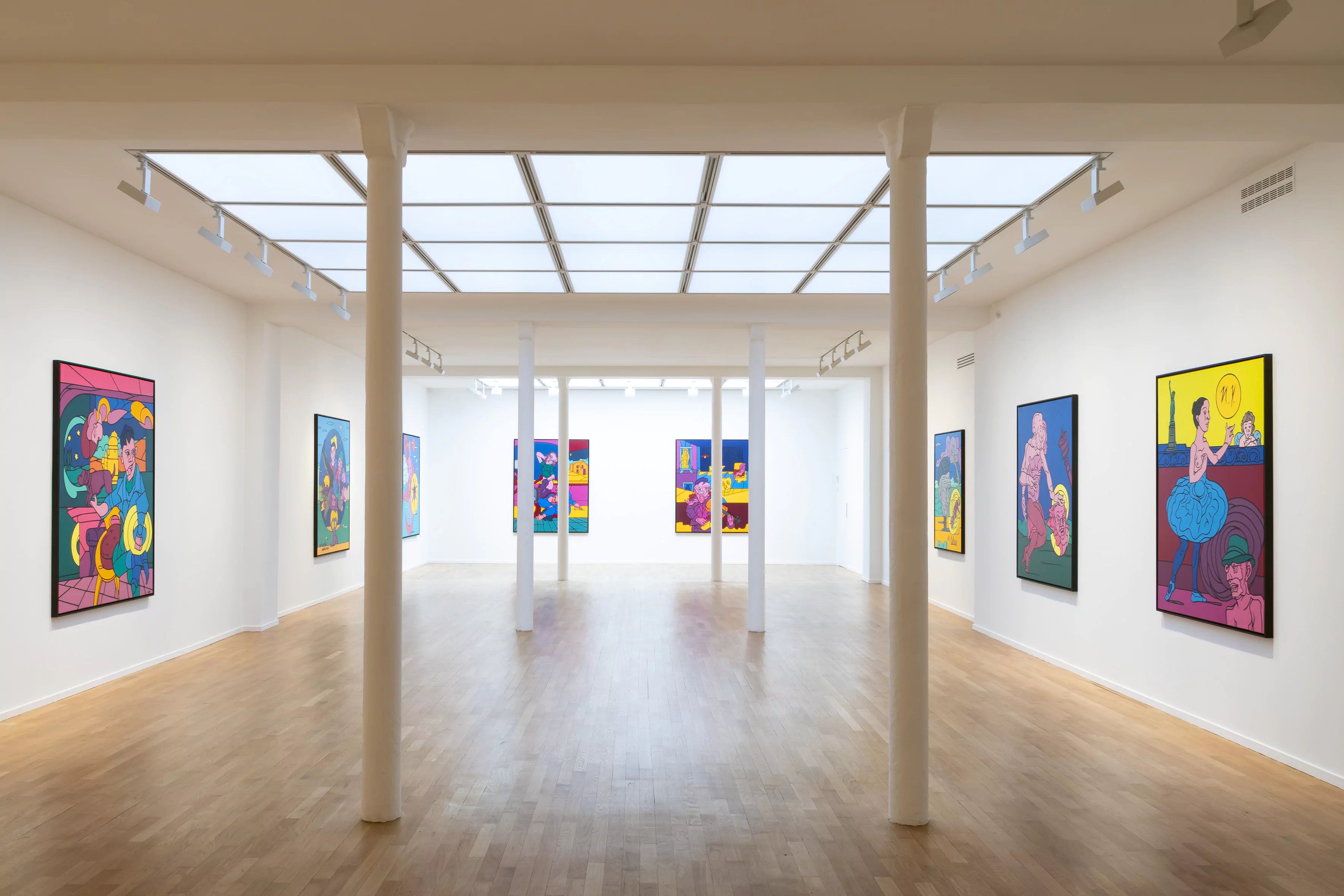
Valerio Adami
Valerio Adami
At 87, Valerio Adami is unveiling a new series of introspective and poignant canvases at Templon, the result of over two years of work. The exhibition plunges visitors into the artist’s striking universe, a world of vivid colours, yet more thoughtful than ever, haunted by the artist-philosopher’s elegant hand-writing.
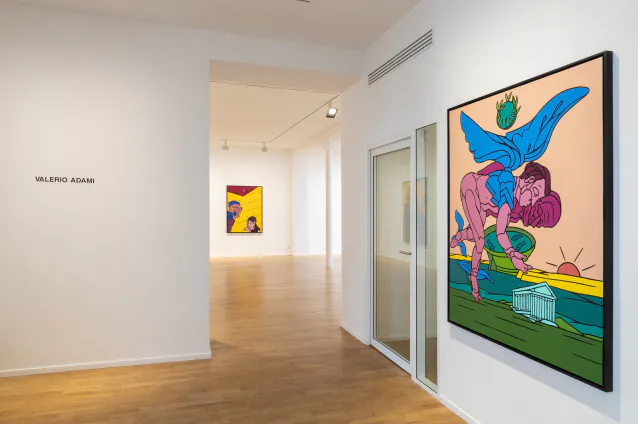
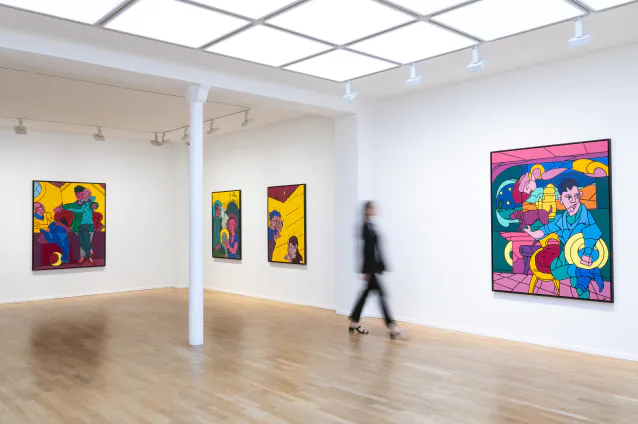
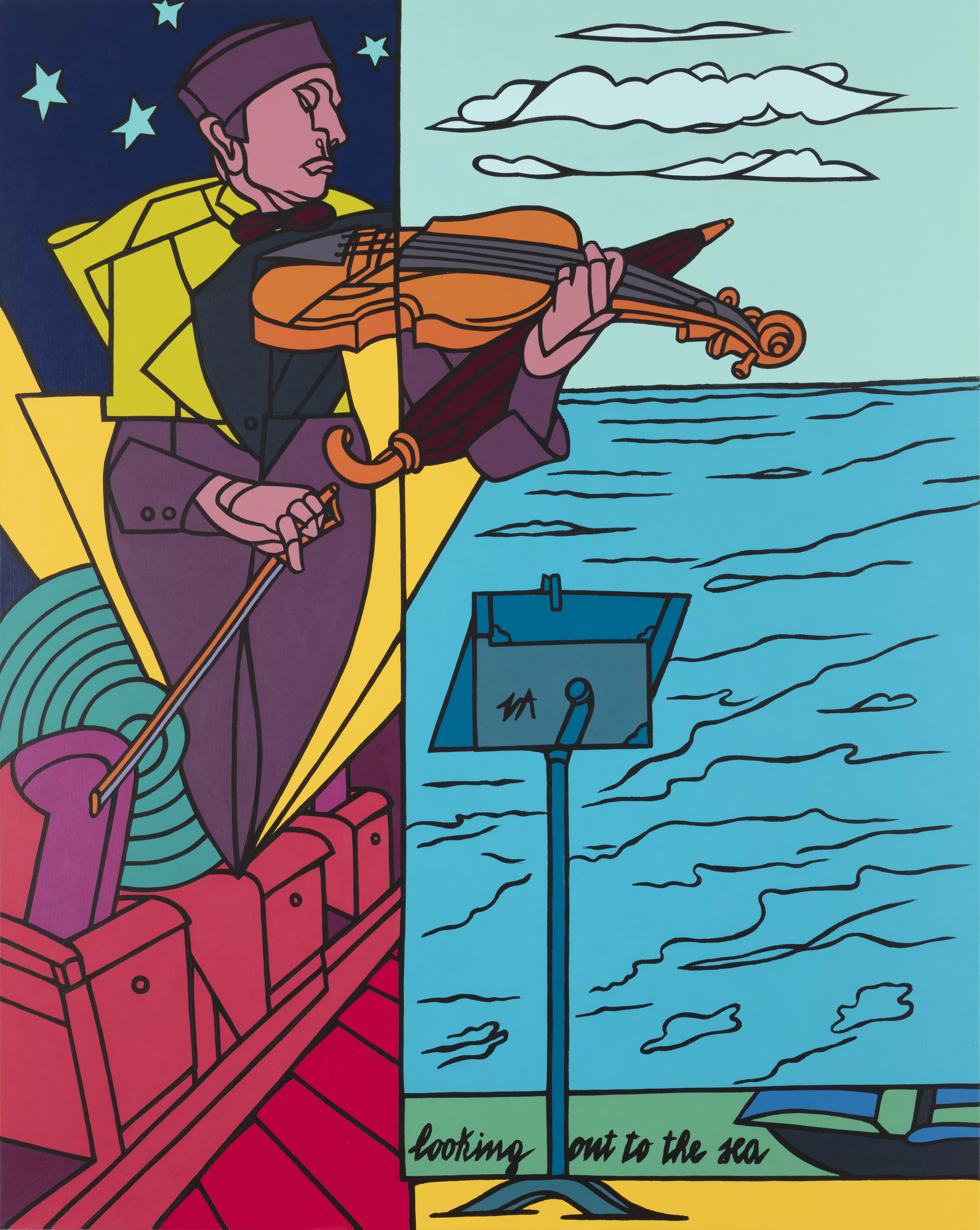
Although long associated with Narrative Figuration, here Valerio Adami evokes the neo-classical drawing tradition, returning to his roots when he studied at the Accademia di belle arti di Brera a Milano. He created most of the dozen previously unseen new works in his Montmartre studio. They feature complex compositions where his famous wavy black line encircles and dissects each shape as the nomadic artist continues to explore his favourite themes: travel, music, literature and theatre. While some pieces have autobiographical touches or suggest vignettes from daily life, others pay explicit tribute to figures he admires, such as a work dedicated to the great poet Walt Whitman and another to Shakespeare’s Hamlet.
Now more than ever, Valerio Adami defines his practices as a “philosophical questioning of the verb.” Enigmatic and accomplished, his painting defies the laws of perspective by multiplying planes and vanishing lines. The bright, unusual colours contrast with the apparent melancholy of the characters who populate his work. The painter seeks to use these distortions to give rise to new meanings. As he explains: “Therein lies the mystery and magic of painting: the creation of a myth, of this conflict between the temporal and the timeless.”
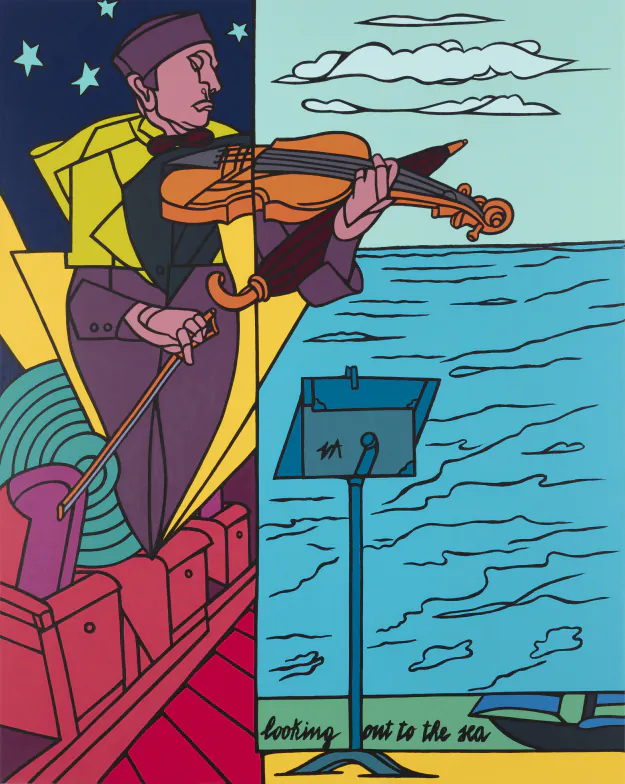
Looking out to the sea
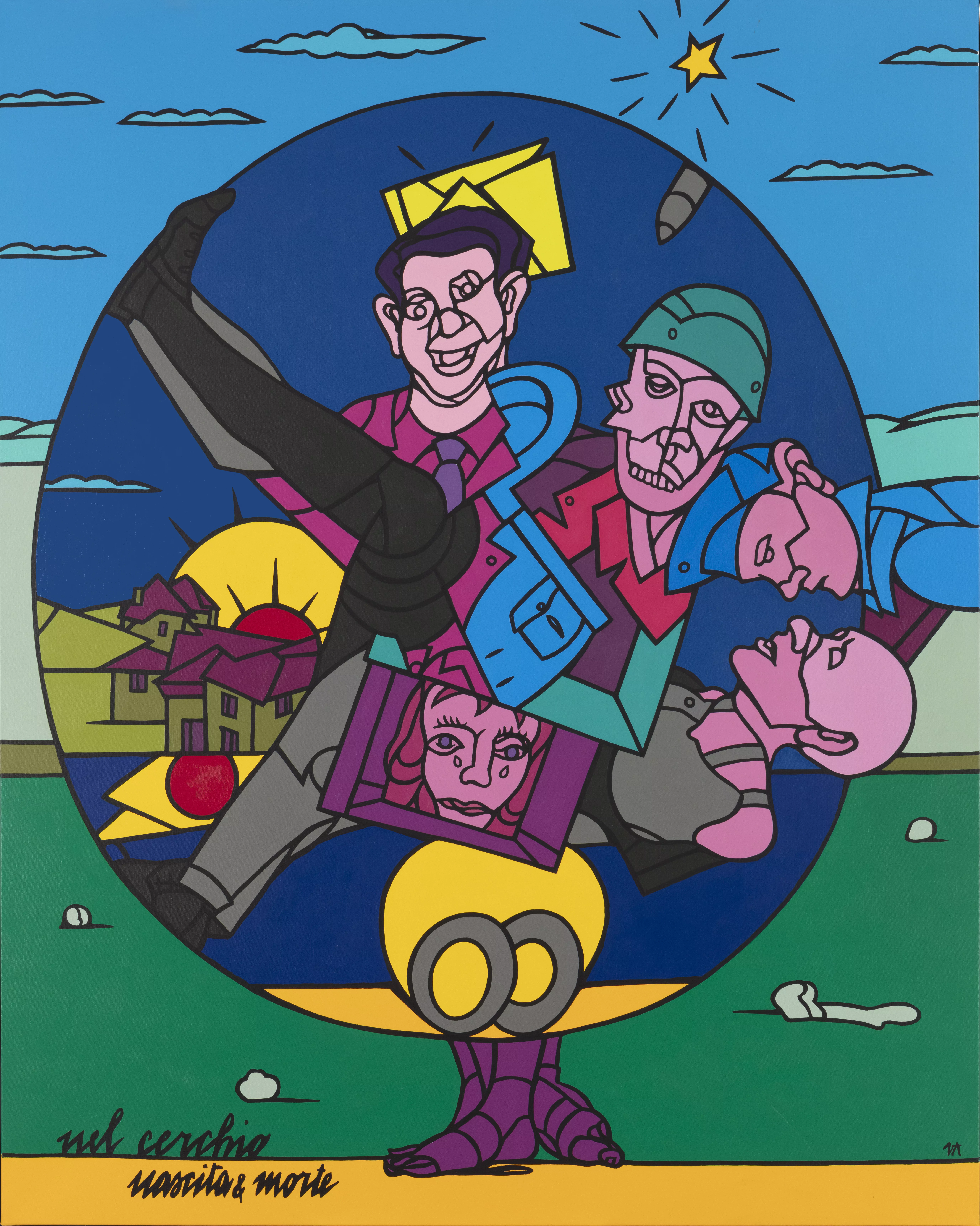
The artist
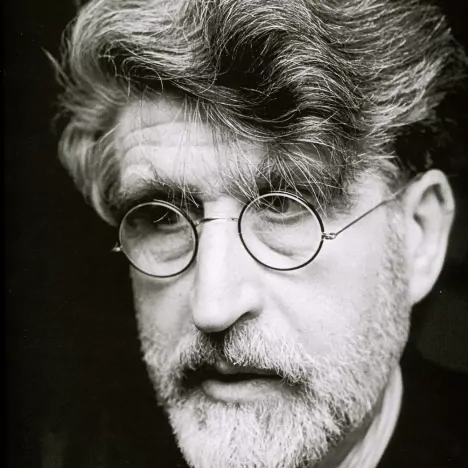
Born in 1935 in Bologna, Valerio Adami is a leading figure in the Narrative Figuration movement. His acrylic paintings are characterised by blocks of colour outlined in black evoking the themes of travel, music, literature and theatre. The notion of mystery is expressed in the many literary references that populate the paintings, a notion that always plays a central role in his work, which he defines as a philosophical questioning.
